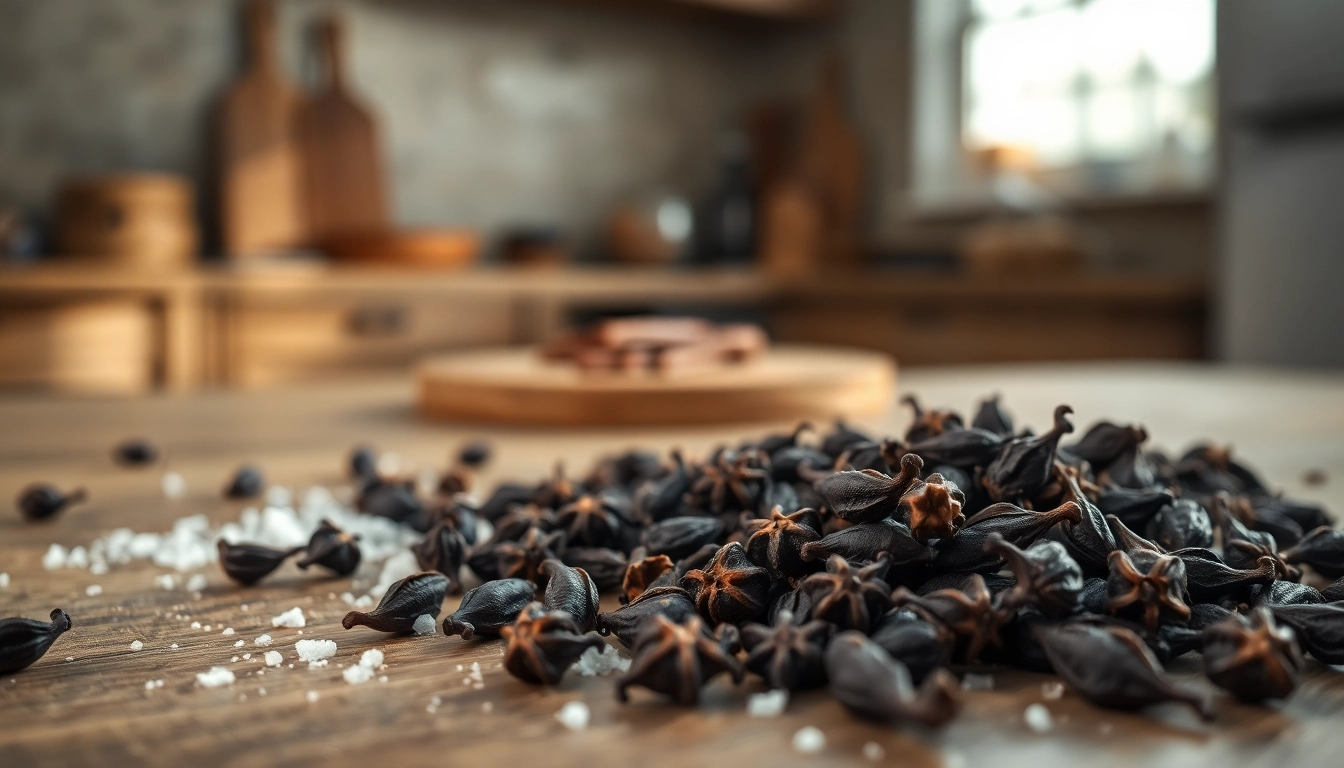
Introduction to Cinnamon Bark
Cinnamon, known for its warm and sweet flavor, is a spice that has captivated taste buds for thousands of years. Among its varieties, Cinnamon Bark stands out not only for its culinary uses but also for its myriad health benefits. Understanding cinnamon bark can transform your cooking and elevate your wellness journey. In this comprehensive exploration, we’ll dive into what cinnamon bark is, its rich history, health benefits, culinary applications, and how to choose and preserve this delightful spice.
What is Cinnamon Bark?
Cinnamon bark is the inner bark of trees belonging to the genus Cinnamomum. Harvested during specific seasons, the bark is peeled and dried, curling into quills or rolled into what we commonly recognize as cinnamon sticks. This spice is known for its distinct aroma and is commonly featured in both sweet and savory dishes. The main types of cinnamon are Ceylon cinnamon, often referred to as “true cinnamon,” and Cassia cinnamon, which is more commonly found in grocery stores.
History and Origins of Cinnamon Bark
The history of cinnamon is as rich as its flavor. Ancient Egyptians used cinnamon in embalming processes and as a perfume. The spice was so revered that it was considered more valuable than gold. Throughout history, cinnamon has been mentioned in ancient text, including the Bible and various medicinal manuscripts. The spice traveled through trade routes from Asia to Europe and Africa, enriching cuisines and cultures along the way. As culinary practices evolved, cinnamon remained a staple, used for its flavor, aroma, and health-related properties.
Cinnamon Bark vs. Cassia: Key Differences
While both cinnamon bark and Cassia offer delightful flavors, they differ significantly in taste, appearance, and health benefits. Ceylon cinnamon has a delicate, sweet flavor and is lighter in color, while Cassia is darker with a bolder, spicier taste. Nutritionally, Ceylon cinnamon is preferred due to its lower coumarin levels, a compound that can be harmful in large quantities. Understanding these differences can help you choose the right type for your culinary needs and health considerations.
Health Benefits of Cinnamon Bark
Incorporating cinnamon bark into your diet is more than just a culinary choice; it’s a decision that can enhance your overall health. The unique properties of cinnamon bark offer a range of benefits that make it a powerful addition to any food regimen.
Antioxidant Properties and Immune Support
Cinnamon bark is known for its high antioxidant content, which plays a crucial role in protecting the body from oxidative stress and free radical damage. These antioxidants, such as polyphenols, can help combat inflammation and boost the immune system. A study indicated that regular consumption of cinnamon could enhance the body’s ability to fight off infections and diseases, helping to maintain a healthy immune response.
Blood Sugar Regulation and Metabolic Health
One of the most documented health benefits of cinnamon bark is its ability to regulate blood sugar levels. Clinical studies have shown that cinnamon can improve insulin sensitivity, making it an excellent spice for those managing diabetes. Incorporating cinnamon into a balanced diet may assist in controlling blood glucose levels, thus supporting metabolic health. By potentially lowering fasting blood sugar levels, cinnamon bark offers a natural way to aid metabolic processes in the body.
Anti-inflammatory Effects for Overall Wellness
Chronic inflammation is a precursor to many health conditions, including heart disease and arthritis. Cinnamon bark may help reduce inflammation, thanks to its active components that exhibit anti-inflammatory properties. These effects can lead to overall improved health and wellness. Regular consumption of cinnamon could be a proactive measure in mitigating inflammation-related health issues.
Uses of Cinnamon Bark in Cooking
Cinnamon bark’s rich flavor profile makes it a versatile ingredient in numerous culinary applications. Whether you are a seasoned chef or an enthusiastic home cook, there are countless ways to incorporate this spice into your meals.
Incorporating Cinnamon Bark in Recipes
From savory dishes to sweet treats, cinnamon bark can elevate recipes with its enchanting flavor. It works well in stews and curries, adding depth and warmth. When used in dessert recipes such as oatmeal, cinnamon rolls, or chocolate cakes, it enhances the sweetness and aroma. Experimenting with cinnamon bark in various cuisines—from Middle Eastern dishes to traditional American desserts—can open up a world of flavor possibilities.
Cinnamon Bark in Beverages: Tea and More
Cinnamon bark is a popular ingredient in beverages, particularly during colder seasons. It can be brewed into a soothing tea, providing warmth and comfort on chilly days. Additionally, it can be added to smoothies and nut milk for an aromatic twist. Think about infusing cinnamon bark into your coffee for a delightful morning pick-me-up or mixing it into mulled wine for a festive holiday treat. The versatility of cinnamon bark allows it to be a key component in various drink recipes.
Baking with Cinnamon Bark: Tips and Tricks
When it comes to baking, cinnamon bark can be an essential flavor enhancer. Whether it’s in cookies, cakes, or bread, knowing how to best utilize this spice can make a substantial difference. For instance, grinding the bark into a fine powder before adding it to batters can help release its oils and flavors better. It’s also effective to steep cinnamon sticks in liquids like milk or cream before incorporating them into recipes, adding depth to your baking creations. Experimenting with different amounts—by trial and error—can lead to your signature recipe.
How to Choose Quality Cinnamon Bark
Choosing the right cinnamon bark requires knowledge and discernment. With the market filled with various options, understanding what constitutes high-quality cinnamon can ensure you benefit most from this versatile spice.
Identifying Authentic Cinnamon vs. Imitation
Not all cinnamon is created equal. Ceylon cinnamon is considered the “true” cinnamon, whereas Cassia is often mislabeled as such. When purchasing, look for labeling that specifies Ceylon cinnamon to ensure you’re getting authentic cinnamon bark. Pay attention to the color, aroma, and forms offered—ground cinnamon should have a sweet and pungent smell, whereas lower-quality cinnamon may have a less fragrant scent. A natural, sweet aroma is often a sign of authenticity.
Factors Affecting the Quality of Cinnamon Bark
Several factors contribute to the quality of cinnamon bark, including the region it’s sourced from and the time of harvesting. Quality cinnamon usually comes from specific areas known for cinnamon cultivation, such as Sri Lanka for Ceylon cinnamon. Verifying origin stories can help to select premium products. Additionally, harvesting methods and post-harvest processing—such as sun-drying and proper storage—can impact quality. Pay attention to these elements when purchasing to ensure you’re choosing high-quality cinnamon bark.
Where to Buy High-Quality Cinnamon Bark
To procure high-quality cinnamon bark, consider buying from reputable spice merchants or organic food stores. Many online retailers specialize in providing authentic Ceylon cinnamon and will often include detailed descriptions about sourcing and quality assurance. Shopping from a trusted supplier ensures integrity in what you are consuming and has the additional benefit of supporting sustainable practices.
Storing and Preserving Cinnamon Bark
Like all spices, proper storage is essential for maintaining the flavor and potency of cinnamon bark. Knowing how to store it correctly can help you enjoy it for longer while preserving its beneficial properties.
Best Practices for Storing Cinnamon Bark
Cinnamon bark should be stored in a cool, dry place away from direct sunlight. Airtight containers, such as glass jars or metal tins, are recommended for preserving freshness. Keeping it away from moisture and humidity is crucial as this can lead to mold growth and degradation of flavor. Labeling containers with purchase dates can help monitor freshness over time.
How to Extend the Shelf Life of Cinnamon Bark
To extend the shelf life of cinnamon bark, consider vacuum sealing or freezing it if you buy in bulk. While freezing may change the texture slightly, it helps preserve flavor and potency. For ground cinnamon, it’s advisable to use it within six months for optimal flavor, while whole sticks can last for years if stored correctly. Regularly checking your spices can prevent the use of stale cinnamon in recipes.
Creative Ways to Use Leftover Cinnamon Bark
If you’ve found yourself with extra cinnamon bark, consider creative uses beyond the kitchen. It can be used in crafting homemade potpourri, adding a warm scent to your living space. Cinnamon sticks can also make a beautiful addition to holiday decorations or gift wrapping, offering a rustic charm. Furthermore, use it to infuse oils or vinegars, creating unique flavor enhancers for your culinary explorations.







